Jan Dufek
Best Viewpoints for External Robots or Sensors Assisting Other Robots
Jul 20, 2020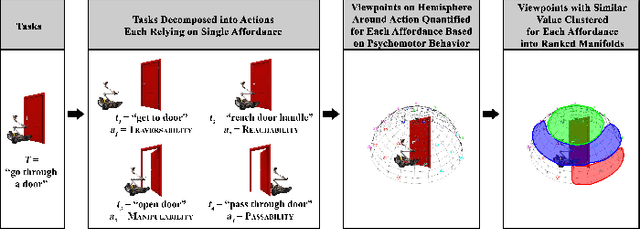
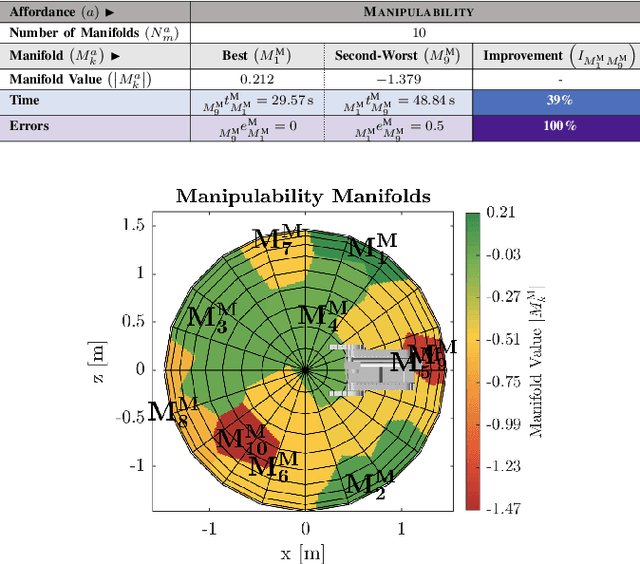
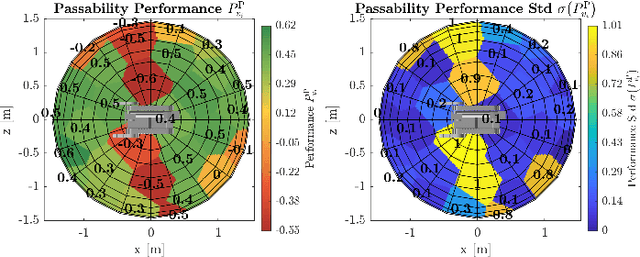
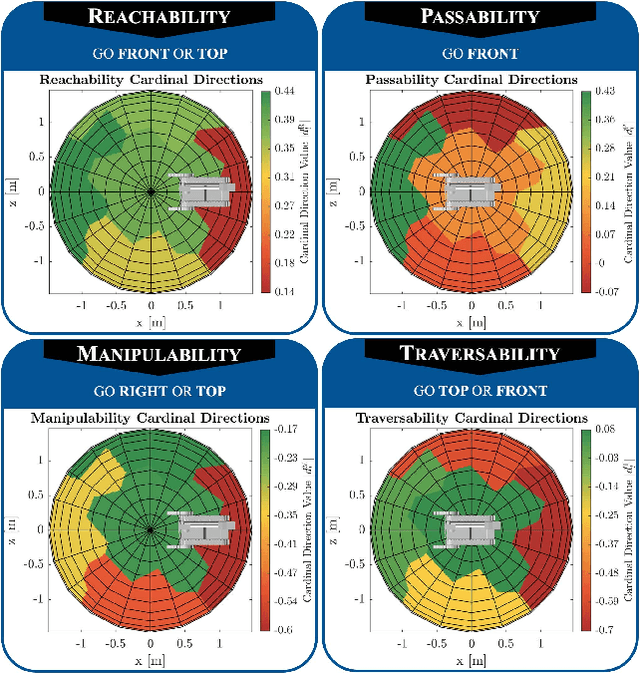
Abstract:This work creates a model of the value of different external viewpoints of a robot performing tasks. The current state of the practice is to use a teleoperated assistant robot to provide a view of a task being performed by a primary robot; however, the choice of viewpoints is ad hoc and does not always lead to improved performance. This research applies a psychomotor approach to develop a model of the relative quality of external viewpoints using Gibsonian affordances. In this approach, viewpoints for the affordances are rated based on the psychomotor behavior of human operators and clustered into manifolds of viewpoints with the equivalent value. The value of 30 viewpoints is quantified in a study with 31 expert robot operators for 4 affordances (Reachability, Passability, Manipulability, and Traversability) using a computer-based simulator of two robots. The adjacent viewpoints with similar values are clustered into ranked manifolds using agglomerative hierarchical clustering. The results show the validity of the affordance-based approach by confirming that there are manifolds of statistically significantly different viewpoint values, viewpoint values are statistically significantly dependent on the affordances, and viewpoint values are independent of a robot. Furthermore, the best manifold for each affordance provides a statistically significant improvement with a large Cohen's d effect size (1.1-2.3) in performance (improving time by 14%-59% and reducing errors by 87%-100%) and improvement in performance variation over the worst manifold. This model will enable autonomous selection of the best possible viewpoint and path planning for the assistant robot.
Tethered Aerial Visual Assistance
Jan 15, 2020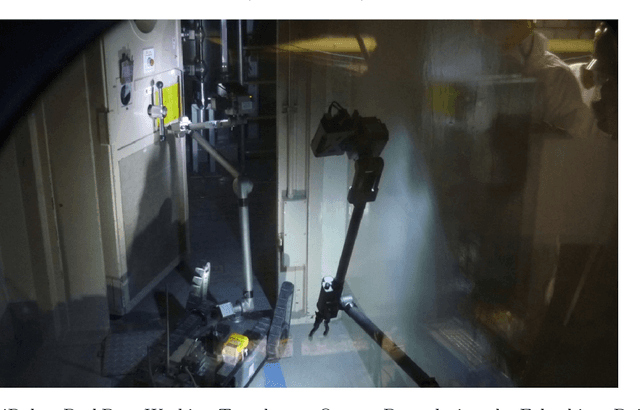
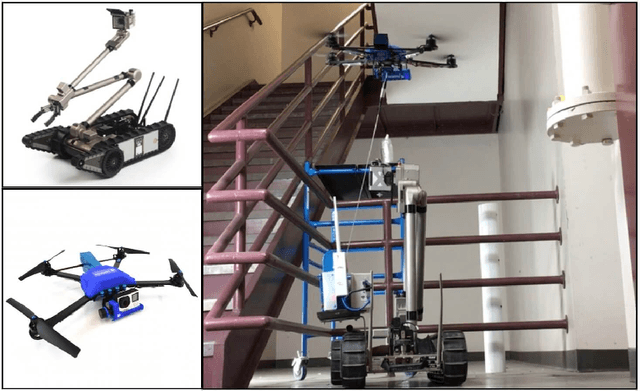
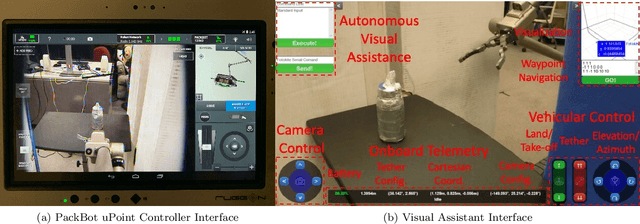
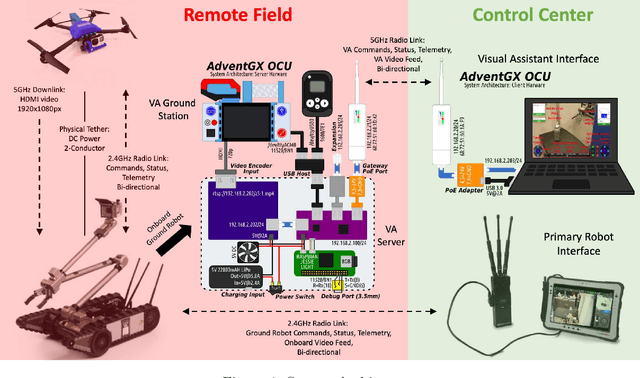
Abstract:In this paper, an autonomous tethered Unmanned Aerial Vehicle (UAV) is developed into a visual assistant in a marsupial co-robots team, collaborating with a tele-operated Unmanned Ground Vehicle (UGV) for robot operations in unstructured or confined environments. These environments pose extreme challenges to the remote tele-operator due to the lack of sufficient situational awareness, mostly caused by the unstructuredness and confinement, stationary and limited field-of-view and lack of depth perception from the robot's onboard cameras. To overcome these problems, a secondary tele-operated robot is used in current practices, who acts as a visual assistant and provides external viewpoints to overcome the perceptual limitations of the primary robot's onboard sensors. However, a second tele-operated robot requires extra manpower and teamwork demand between primary and secondary operators. The manually chosen viewpoints tend to be subjective and sub-optimal. Considering these intricacies, we develop an autonomous tethered aerial visual assistant in place of the secondary tele-operated robot and operator, to reduce human robot ratio from 2:2 to 1:2. Using a fundamental viewpoint quality theory, a formal risk reasoning framework, and a newly developed tethered motion suite, our visual assistant is able to autonomously navigate to good-quality viewpoints in a risk-aware manner through unstructured or confined spaces with a tether. The developed marsupial co-robots team could improve tele-operation efficiency in nuclear operations, bomb squad, disaster robots, and other domains with novel tasks or highly occluded environments, by reducing manpower and teamwork demand, and achieving better visual assistance quality with trustworthy risk-aware motion.
Robot Risk-Awareness by Formal Risk Reasoning and Planning
Sep 09, 2019

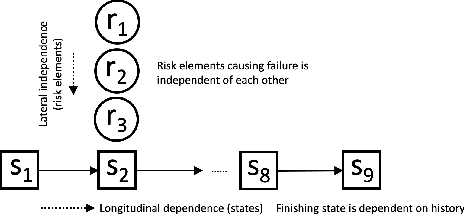

Abstract:This paper proposes a formal robot motion risk reasoning framework and develops a risk-aware path planner that minimizes the proposed risk. While robots locomoting in unstructured or confined environments face a variety of risk, existing risk only focuses on collision with obstacles. Such risk is currently only addressed in ad hoc manners. Without a formal definition, ill-supported properties, e.g. additive or Markovian, are simply assumed. Relied on an incomplete and inaccurate representation of risk, risk-aware planners use ad hoc risk functions or chance constraints to minimize risk. The former inevitably has low fidelity when modeling risk, while the latter conservatively generates feasible path within a probability bound. Using propositional logic and probability theory, the proposed motion risk reasoning framework is formal. Building upon a universe of risk elements of interest, three major risk categories, i.e. locale-, action-, and traverse-dependent, are introduced. A risk-aware planner is also developed to plan minimum risk path based on the newly proposed risk framework. Results of the risk reasoning and planning are validated in physical experiments in real-world unstructured or confined environments. With the proposed fundamental risk reasoning framework, safety of robot locomotion could be explicitly reasoned, quantified, and compared. The risk-aware planner finds safe path in terms of the newly proposed risk framework and enables more risk-aware robot behavior in unstructured or confined environments.
Robot Motion Risk Reasoning Framework
Sep 05, 2019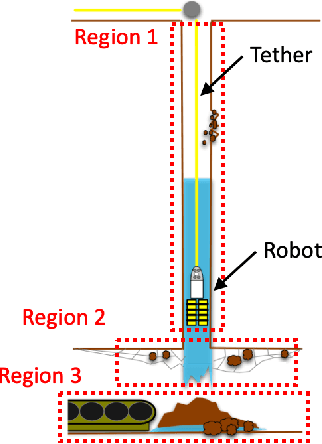
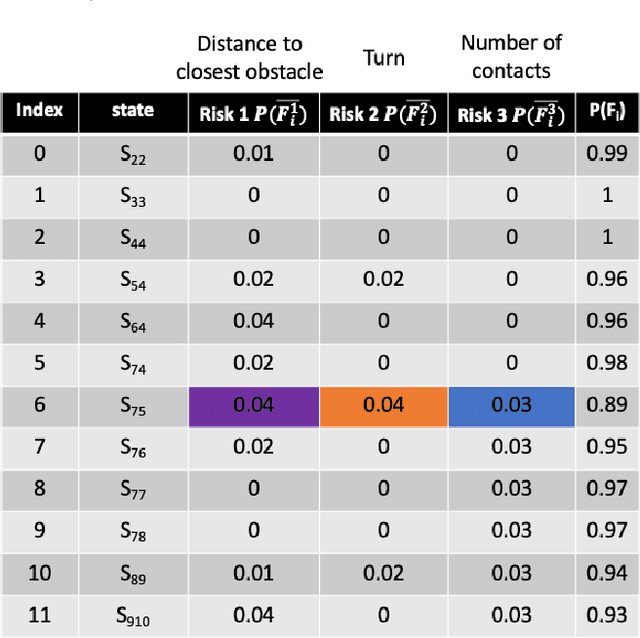
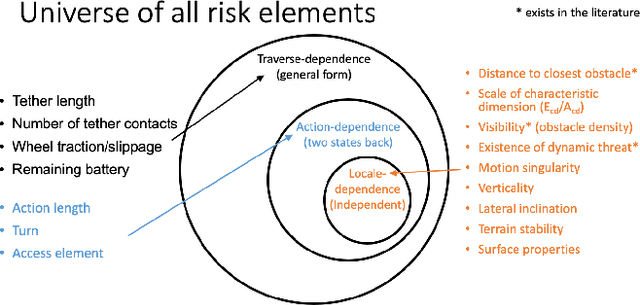
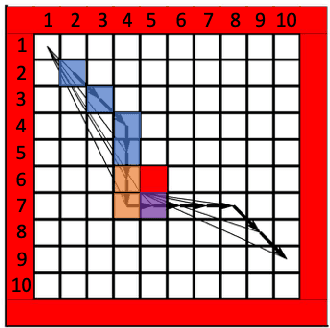
Abstract:This paper presents a formal and comprehensive reasoning framework for robot motion risk, with a focus on locomotion in challenging unstructured or confined environments. Risk which locomoting robots face in physical spaces was not formally defined in the robotics literature. Safety or risk concerns were addressed in an ad hoc fashion, depending only on the specific application of interest. Without a formal definition, certain properties of risk were simply assumed but ill-supported, such as additivity or being Markovian. The only contributing adverse effect being considered is related with obstacles. This work proposes a formal definition of robot motion risk using propositional logic and probability theory. It presents a universe of risk elements within three major risk categories and unifies them into one single metric. True properties of risk are revealed with formal reasoning, such as non-additivity or history-dependency. Risk representation which encompasses risk effects from both temporal and spatial domain is presented. The resulted risk framework provides a formal approach to reason about robot motion risk. Safety of robot locomotion could be explicitly reasoned, quantified, and compared. It could be used for risk-aware planning and reasoning by both human and robotic agents.
Explicit Motion Risk Representation
Apr 16, 2019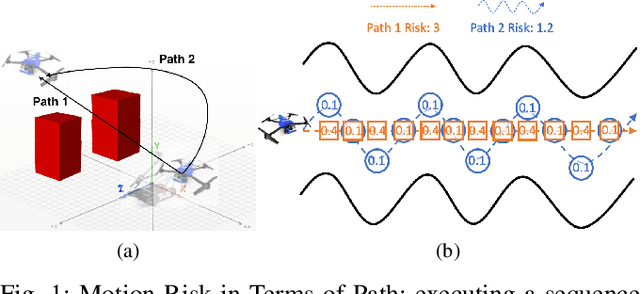

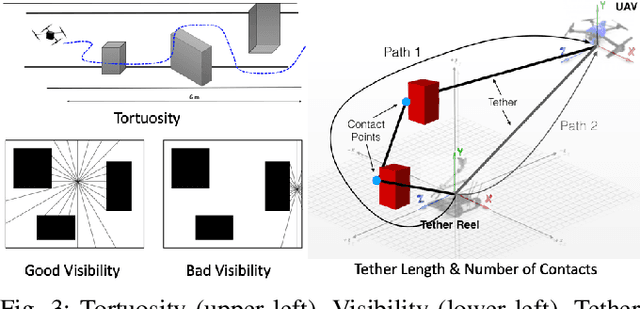

Abstract:This paper presents a formal definition and explicit representation of robot motion risk. Currently, robot motion risk has not been formally defined, but has already been used in motion and path planning. Risk is either implicitly represented as model uncertainty using probabilistic approaches, where the definition of risk is somewhat avoided, or explicitly modeled as a simple function of states, without a formal definition. In this work, we provide formal reasoning behind what risk is for robot motion and propose a formal definition of risk in terms of a sequence of motion, namely path. Mathematical approaches to represent motion risk are also presented, which is in accordance with our risk definition and properties. The definition and representation of risk provide a meaningful way to evaluate or construct robot motion or path plans. The understanding of risk is even of greater interest for the search and rescue community: the deconstructed environments cast extra risk onto the robot, since they are working under extreme conditions. A proper risk representation has the potential to reduce robot failure in the field.
Benchmarking Tether-based UAV Motion Primitives
Apr 16, 2019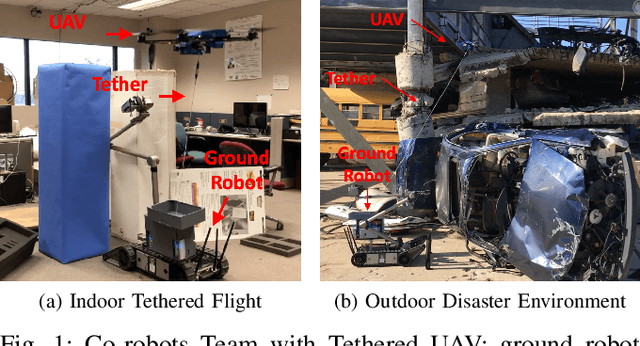
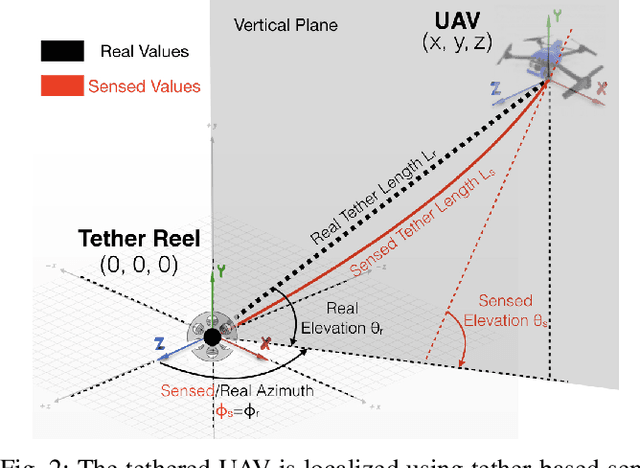
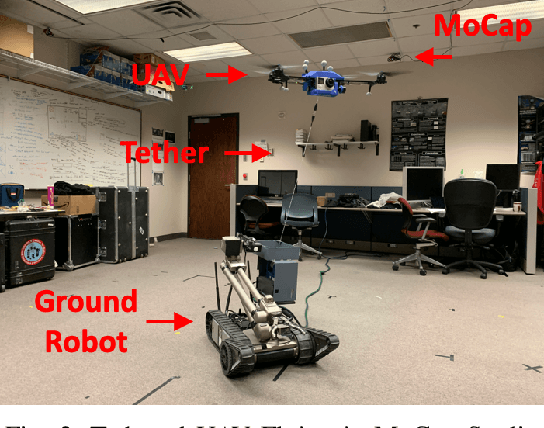
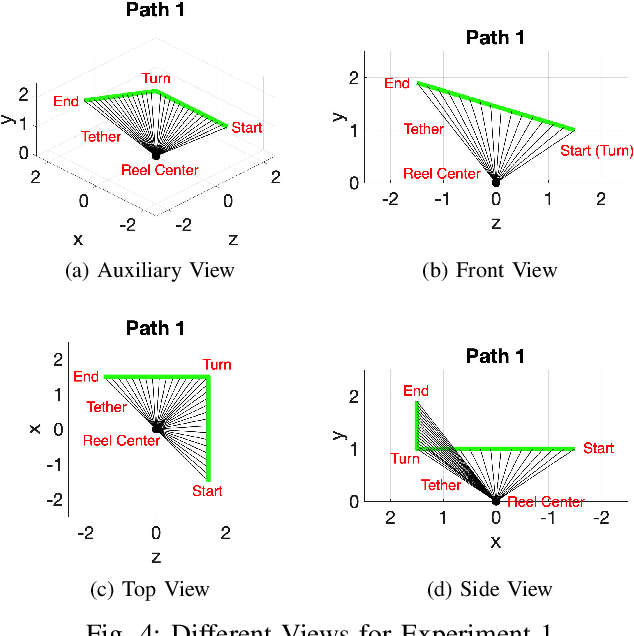
Abstract:This paper proposes and benchmarks two tether-based motion primitives for tethered UAVs to execute autonomous flight with proprioception only. Tethered UAVs have been studied mainly due to power and safety considerations. Tether is either not included in the UAV motion (treated same as free-flying UAV) or only in terms of station-keeping and high-speed steady flight. However, feedback from and control over the tether configuration could be utilized as a set of navigational tools for autonomous flight, especially in GPS-denied environments and without vision-based exteroception. In this work, two tether-based motion primitives are proposed, which can enable autonomous flight of a tethered UAV. The proposed motion primitives are implemented on a physical tethered UAV for autonomous path execution with motion capture ground truth. The navigational performance is quantified and compared. The proposed motion primitives make tethered UAV a mobile and safe autonomous robot platform. The benchmarking results suggest appropriate usage of the two motion primitives for tethered UAVs with different path plans.
Autonomous Visual Assistance for Robot Operations Using a Tethered UAV
Mar 29, 2019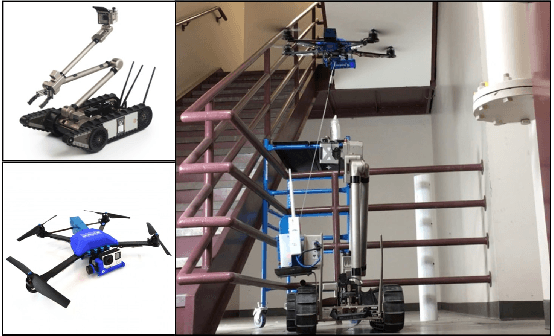

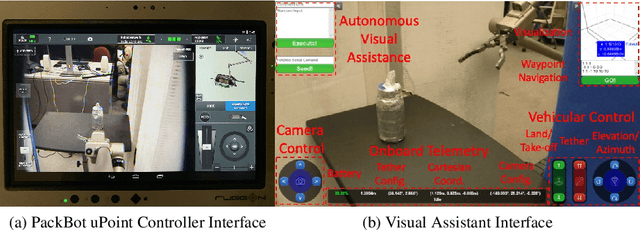
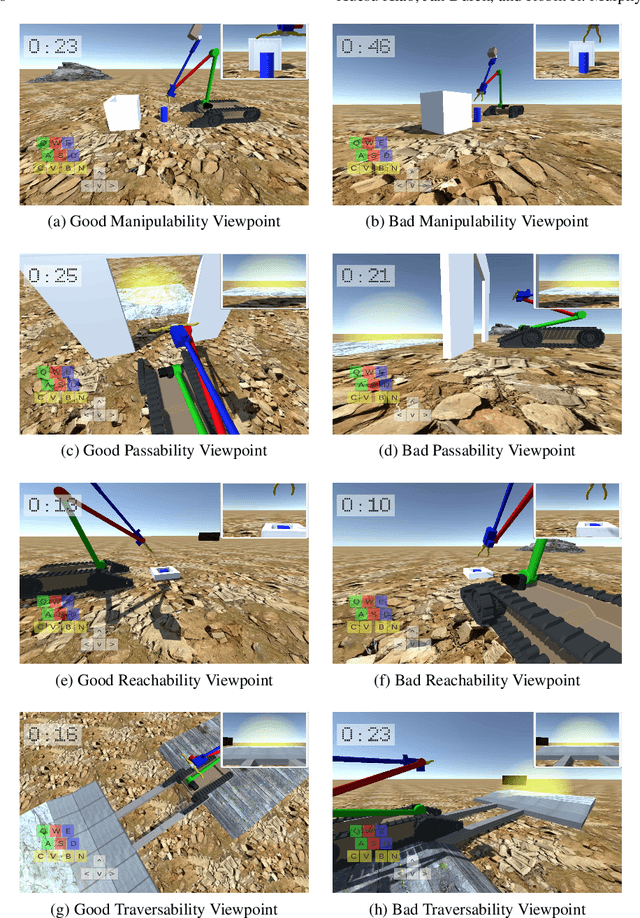
Abstract:This paper develops an autonomous tethered aerial visual assistant for robot operations in unstructured or confined environments. Robotic tele-operation in remote environments is difficult due to lack of sufficient situational awareness, mostly caused by the stationary and limited field-of-view and lack of depth perception from the robot's onboard camera. The emerging state of the practice is to use two robots, a primary and a secondary that acts as a visual assistant to overcome the perceptual limitations of the onboard sensors by providing an external viewpoint. However, problems exist when using a tele-operated visual assistant: extra manpower, manually chosen suboptimal viewpoint, and extra teamwork demand between primary and secondary operators. In this work, we use an autonomous tethered aerial visual assistant to replace the secondary robot and operator, reducing human robot ratio from 2:2 to 1:2. This visual assistant is able to autonomously navigate through unstructured or confined spaces in a risk-aware manner, while continuously maintaining good viewpoint quality to increase the primary operator's situational awareness. With the proposed co-robots team, tele-operation missions in nuclear operations, bomb squad, disaster robots, and other domains with novel tasks or highly occluded environments could benefit from reduced manpower and teamwork demand, along with improved visual assistance quality based on trustworthy risk-aware motion in cluttered environments.
Explicit-risk-aware Path Planning with Reward Maximization
Mar 07, 2019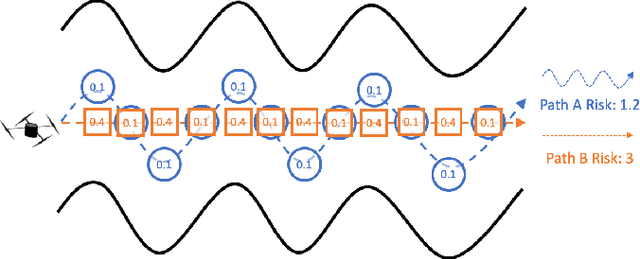
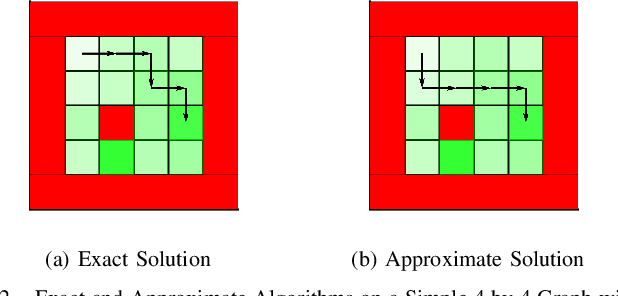
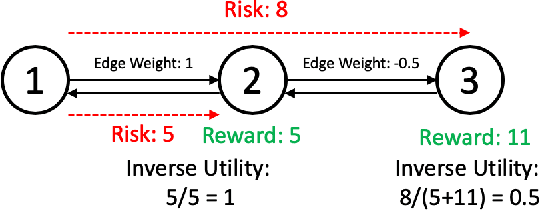
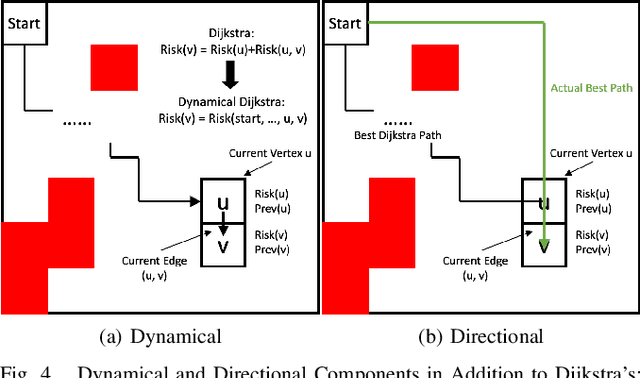
Abstract:This paper develops a path planner that minimizes risk (e.g. motion execution) while maximizing accumulated reward (e.g., quality of sensor viewpoint) motivated by visual assistance or tracking scenarios in unstructured or confined environments. In these scenarios, the robot should maintain the best viewpoint as it moves to the goal. However, in unstructured or confined environments, some paths may increase the risk of collision; therefore there is a tradeoff between risk and reward. Conventional state-dependent risk or probabilistic uncertainty modeling do not consider path-level risk or is difficult to acquire. This risk-reward planner explicitly represents risk as a function of motion plans, i.e., paths. Without manual assignment of the negative impact to the planner caused by risk, this planner takes in a pre-established viewpoint quality map and plans target location and path leading to it simultaneously, in order to maximize overall reward along the entire path while minimizing risk. Exact and approximate algorithms are presented, whose solution is further demonstrated on a physical tethered aerial vehicle. Other than the visual assistance problem, the proposed framework also provides a new planning paradigm to address minimum-risk planning under dynamical risk and absence of substructure optimality and to balance the trade-off between reward and risk.
Motion Planning for a UAV with a Straight or Kinked Tether
Nov 06, 2018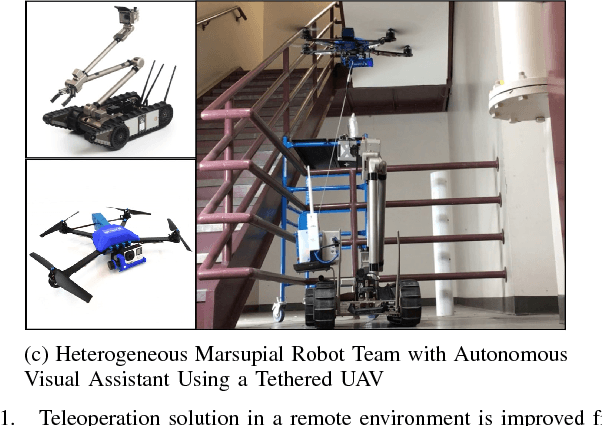
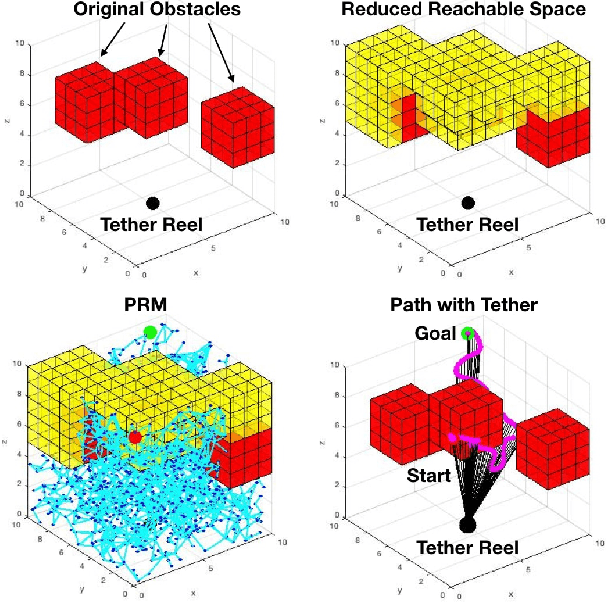

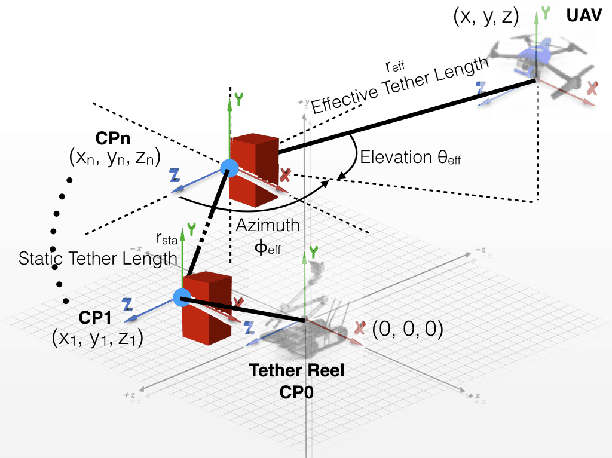
Abstract:This paper develops and compares two motion planning algorithms for a tethered UAV with and without the possibility of the tether contacting the confined and cluttered environment. Tethered aerial vehicles have been studied due to their advantages such as power duration, stability, and safety. However, the disadvantages brought in by the extra tether have not been well investigated by the robotic locomotion community, especially when the tethered agent is locomoting in a non-free space occupied with obstacles. In this work, we propose two motion planning frameworks that (1) reduce the reachable configuration space by taking into account the tether and (2) deliberately plan (and relax) the contact point(s) of the tether with the environment and enable an equivalent reachable configuration space as the non-tethered counterpart would have. Both methods are tested on a physical robot, Fotokite Pro. With our approaches, tethered aerial vehicles could find their applications in confined and cluttered environments with obstacles as opposed to ideal free space, while still maintaining the advantages from the usage of a tether. The motion planning strategies are particularly suitable for marsupial heterogeneous robotic teams, such as visual servoing/assisting for another mobile, tele-operated primary robot.
Visual Servoing of Unmanned Surface Vehicle from Small Tethered Unmanned Aerial Vehicle
Oct 09, 2017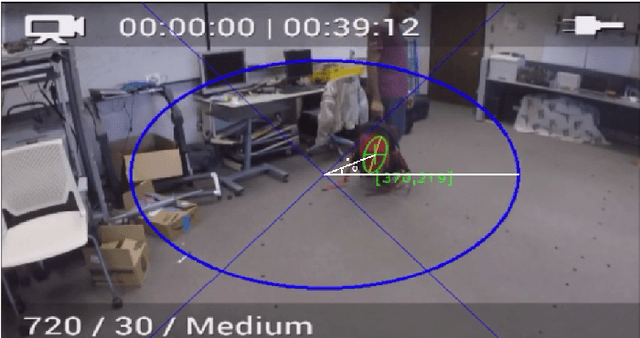
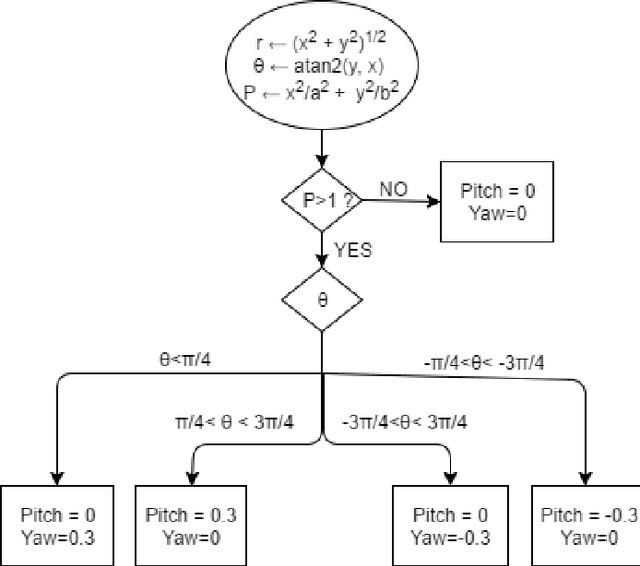
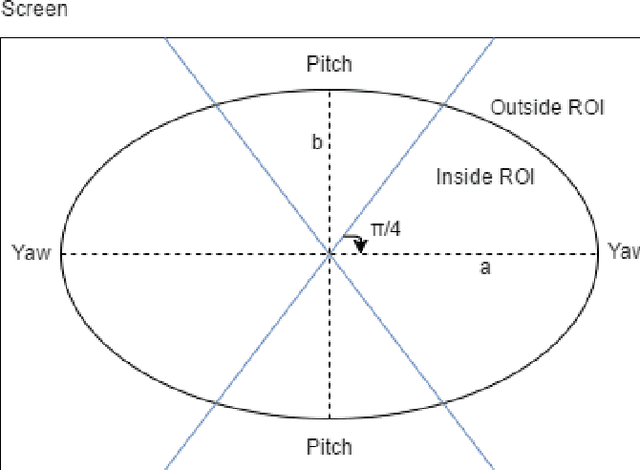
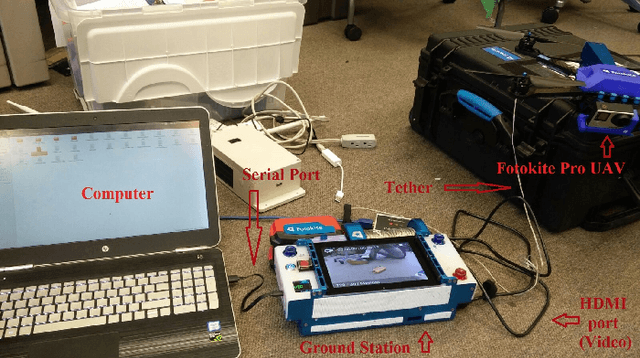
Abstract:This paper presents an algorithm and the implementation of a motor schema to aid the visual localization subsystem of the ongoing EMILY project at Texas A and M University. The EMILY project aims to team an Unmanned Surface Vehicle (USV) with an Unmanned Aerial Vehicle (UAV) to augment the search and rescue of marine casualties during an emergency response phase. The USV is designed to serve as a flotation device once it reaches the victims. A live video feed from the UAV is provided to the casuality responders giving them a visual estimate of the USVs orientation and position to help with its navigation. One of the challenges involved with casualty response using a USV UAV team is to simultaneously control the USV and track it. In this paper, we present an implemented solution to automate the UAV camera movements to keep the USV in view at all times. The motor schema proposed, uses the USVs coordinates from the visual localization subsystem to control the UAVs camera movements and track the USV with minimal camera movements such that the USV is always in the cameras field of view.
 Add to Chrome
Add to Chrome Add to Firefox
Add to Firefox Add to Edge
Add to Edge